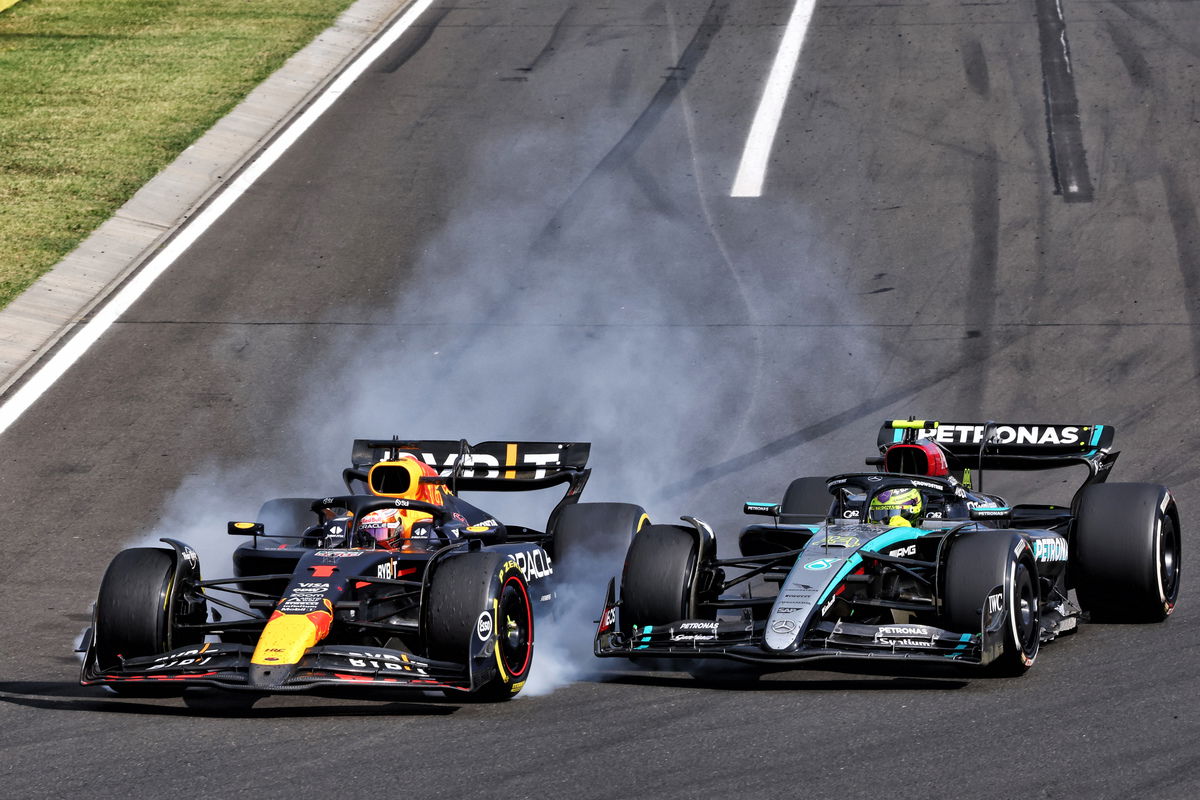

Following a meeting of the FIA World Motor Sport Council, a revision of the F1 technical regulations was published.
The only substantive change was an addition to Article 11.1.2, which relates to the brake system.
Previously it read:
The brake system must be designed so that within each circuit, the forces applied to the brake pads are the same magnitude and act as opposing pairs on a given brake disc.
However, an additional line has now been added which declares;
Any system or mechanism which can produce systematically or intentionally, asymmetric braking torques for a given axle is forbidden.
It comes amid suggestions at least one team was using asymmetric braking to help rotate its car, with Red Bull Racing flagged as the most likely.
The championship-leading operation’s car was thought to have had a different braking system earlier in the year, contributing to Max Verstappen’s retirement from the Australian Grand Prix, though it has since been removed.
The FIA has clarified that the change comes without any specific allegations or concerns being flagged.
More on FIA and Formula 1
👉 Weight increase for 2025 F1 cars
👉 FIA to increase scrutiny on flexi-wings at Belgian GP
👉 F1 race director explains track limits changes
The use of asymmetric brakes is not new, with McLaren employing a second brake pedal to achieve the effect in the late 1990s.
That solution was the brainchild of Steve Nichols, the team’s chief engineer at the time.
“We typically set the cars up with quite a lot of under-steer – at the time we had fairly skinny rear tyres and fairly meaty front tyres – and I had this idea to put a rear brake on in the corners, to sort of dial out the understeer,” he said in an article posted on McLaren’s website recounting the device.
“Paddy Lowe was head of R&D at the time, and this would be considered an R&D project.
“So I told him I wanted to try this thing where we have an extra pedal in the car, and we put the right-rear or left-rear brake on to balance the car.
“All we had to do was put an extra master cylinder on the car, and a length of Aeroquip [brake hose] that went to the right rear calliper, so that when you pushed the normal pedal it would put both rear callipers on, and when you pressed the fiddle brake it only activated the right rear.”
It netted immediate results in testing, with Mika Hakkinen going half a second a lap faster, and was quickly incorporated onto the car for the remainder of the season.
However, it was soon discovered by photographer Darren Heath, who spotted the McLarens’ rear brakes glowing mid-corner, and snapped a shot of the footwell of the car soon after.
A more advanced version of the system was fitted to the cars for 1998 before it was banned.





















Discussion about this post